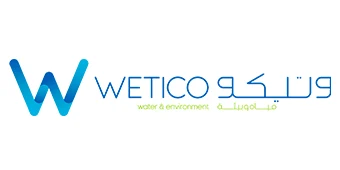BW-FR Series RO Membranes - Withstand 30 Chemical Cleaning
Performance
In industries such as pharmaceuticals and dyeing, where high-pollution water sources need to be treated, frequent cleaning is a necessary condition to ensure production quality and efficiency. Therefore, selecting RO membranes with high cleaning resistance is crucial. The BW-FR series fouling resistance RO membranes, like FilmTec membranes, utilize a non oxidative post treatment process, significantly enhancing the membranes' chemical cleaning resistance. Compared to traditional oxidation treatment membranes, our membranes can withstand a higher frequency of cleaning, achieving over 60 cleaning cycles at most. This means that the membranes can maintain high water flux and desalination rates even after cleaning, effectively extending the lifespan of the membranes and reducing operating costs, making them an ideal choice for high-demand applications.
BW-FR RO Membrane Comparison Test Report
BW-FR RO Membranes, no oxidation post-treatment, resistant to chemical cleaning, with good recovery and stable performance, up to more than 60 times cleaning cycles. Here we share some of the comparative experimental data from 30 times cleaning cycles.
Experimental Methods: Single-element 8" RO housing are connected in parallel, and two brands of contamination-resistant membranes are operated under the same conditions. After rapid fouling, the performance recovery test of acid and alkali chemical cleaning.
Water quality: Factory production wastewater (discharge water quality varies from process to process), mixed with industrial water supply, production wastewater contains high COD and industrial water supply has high hardness.
Test conditions: Pressure frequency conversion regulation constant, recovery rate control in 14%–15%.
Table 1: BW-FR RO Membrane Comparison Test Report
| Cleaning times |
Test conditions |
SMBW-8040-400FR/34 |
BW30FR-400/34FilmTec |
| Raw water Concentration (μs/cm) |
Temp. (°C) |
Test Pressure (psi) |
PH |
Recovery Rate (%) |
Flux LPM |
Recovery Rate (%) |
Flux LPM |
| 1 |
2140 |
19 |
175 |
6.3 |
99.27 |
19 |
99.34 |
20 |
| 2 |
2900 |
17 |
175 |
6 |
99.28 |
19 |
99.34 |
20 |
| 3 |
1141 |
21 |
175 |
7 |
99.28 |
19 |
99.36 |
20 |
| 4 |
1204 |
26 |
175 |
6.8 |
99.27 |
19 |
99.35 |
20 |
| 5 |
1390 |
20 |
175 |
6.7 |
99.24 |
18 |
99.32 |
20 |
| 6 |
1816 |
18 |
175 |
6.5 |
99.2 |
18 |
99.28 |
20 |
| 7 |
1705 |
19 |
175 |
6.6 |
99.15 |
18 |
99.17 |
20 |
| 8 |
1920 |
22 |
175 |
6.3 |
99.12 |
18 |
99.15 |
19.5 |
| 9 |
1760 |
21 |
175 |
6.5 |
99.06 |
18 |
99.12 |
19.5 |
| 10 |
1874 |
24 |
175 |
6.5 |
98.08 |
18 |
99.12 |
19.5 |
| 11 |
2103 |
23 |
175 |
6.2 |
99.1 |
18 |
99.13 |
19.5 |
| 12 |
1766 |
27 |
175 |
6.6 |
98.89 |
17.5 |
99.06 |
19.5 |
| 13 |
1985 |
25 |
175 |
6.7 |
98.89 |
17.5 |
98.95 |
19.5 |
| 14 |
1796 |
22 |
175 |
6.4 |
98.86 |
17.5 |
98.94 |
19 |
| 15 |
1620 |
31 |
175 |
6.6 |
98.84 |
17.5 |
98.95 |
19 |
| 16 |
1975 |
24 |
175 |
6.2 |
98.85 |
17.5 |
98.87 |
19 |
| 17 |
1655 |
26 |
175 |
6.4 |
98.85 |
17.5 |
98.87 |
19 |
| 18 |
1877 |
21 |
175 |
6.5 |
98.77 |
17.5 |
98.85 |
19 |
| 19 |
1680 |
25 |
175 |
6.4 |
98.69 |
17.5 |
98.6 |
19 |
| 20 |
1947 |
24 |
175 |
6.3 |
98.76 |
17.5 |
98.85 |
19 |
| 21 |
1950 |
22 |
175 |
6.2 |
98.75 |
17.5 |
98.83 |
18.5 |
| 22 |
1845 |
21 |
175 |
6.5 |
98.74 |
17.5 |
98.82 |
18.5 |
| 23 |
1796 |
19 |
175 |
6.3 |
98.69 |
17 |
98.85 |
18.5 |
| 24 |
1800 |
20 |
175 |
6.6 |
98.73 |
17 |
98.84 |
18.5 |
| 25 |
1917 |
19 |
175 |
6.3 |
98.72 |
17 |
98.8 |
18.5 |
| 26 |
1722 |
17 |
175 |
6.4 |
98.68 |
17 |
98.8 |
18.5 |
| 27 |
1690 |
19 |
175 |
6.4 |
98.65 |
17 |
98.79 |
18.5 |
| 28 |
2238 |
19 |
175 |
6.1 |
98.66 |
17 |
98.78 |
18.5 |
| 29 |
2495 |
18 |
175 |
6 |
98.65 |
17 |
98.79 |
18.5 |
| 30 |
2074 |
17 |
175 |
6.2 |
98.65 |
17 |
98.78 |
18.5 |
Data Analysis:
- The recovery rate decay of the Snowate membrane is approximately 0.62%, while that of FilmTec is about 0.56%.
- The flux decay for the Snowate membrane is approximately 10.5%, compared to 7.5% for FilmTec.
- The purpose of this test is to compare the recover ability of membrane elements after rapid fouling through chemical cleaning, involving 30 repetitions, including both acid and alkaline cleaning.
- Due to the specific nature of this experiment and the significant differences from actual operating conditions, the data obtained are for reference only and should not be used as a basis for normal operation.
|




















